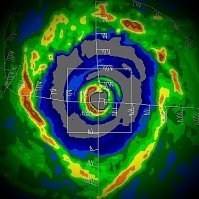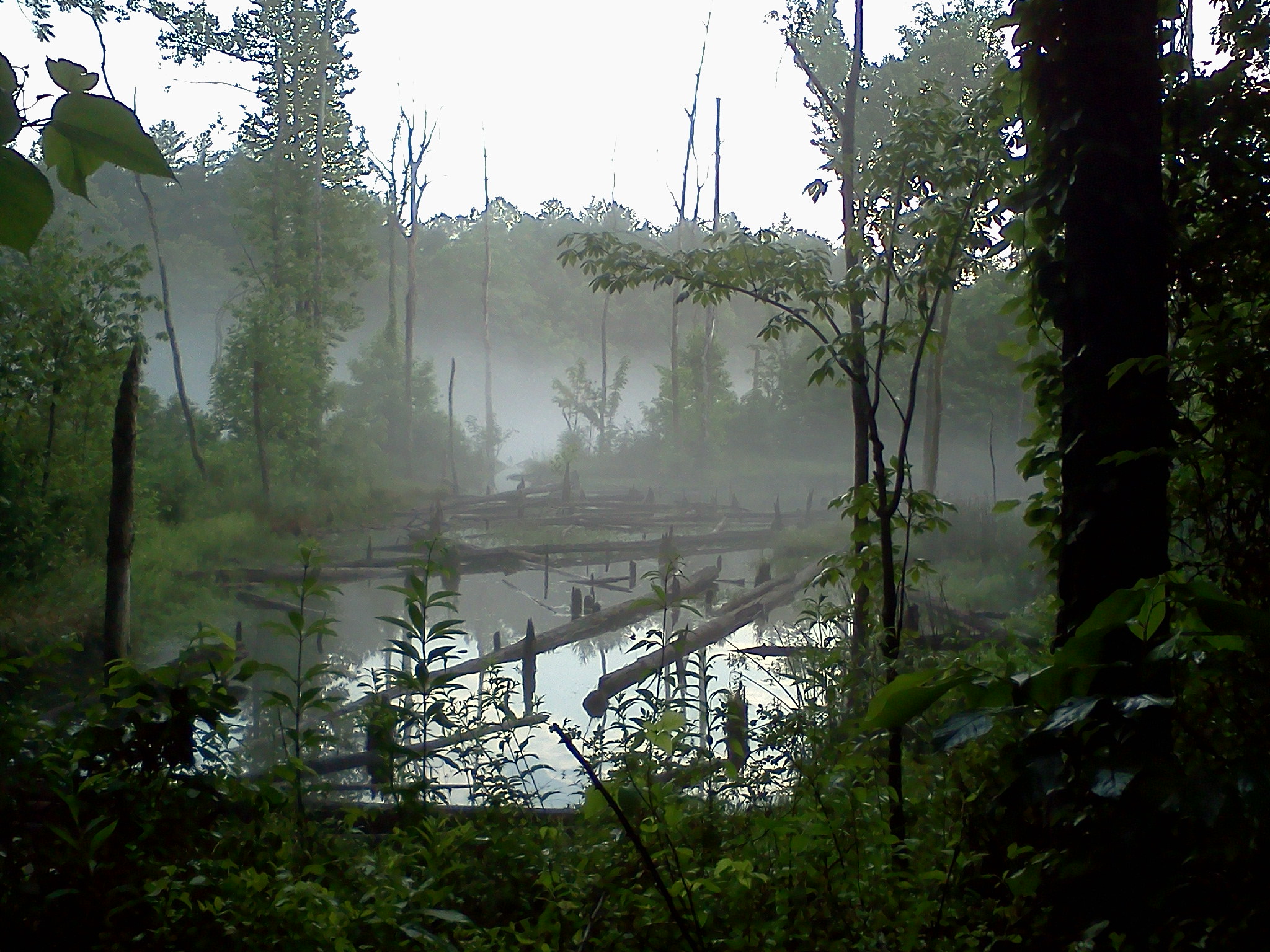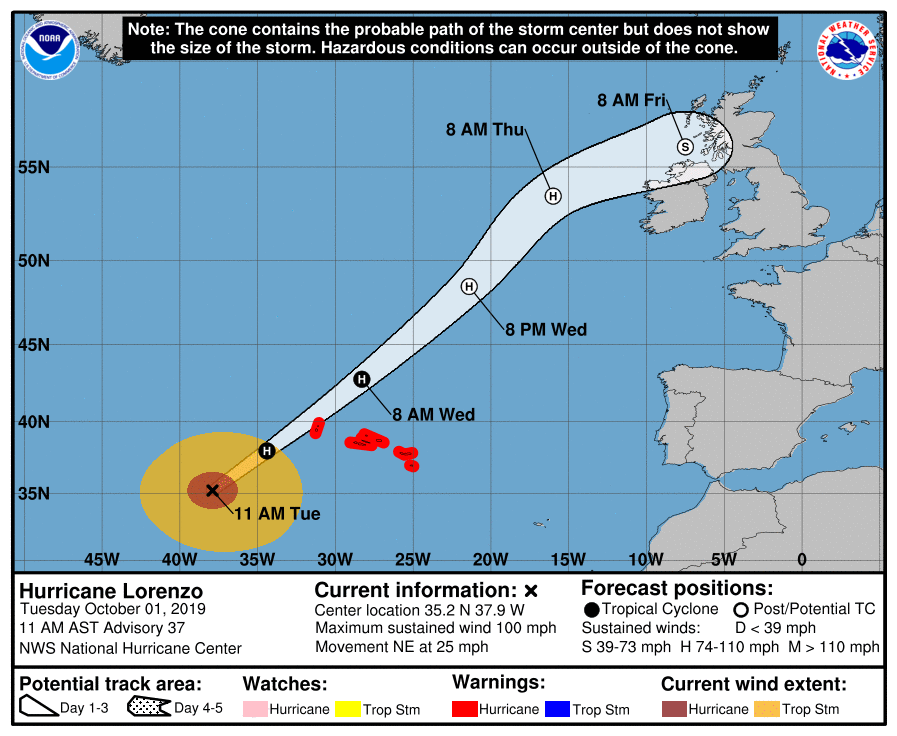-
Posts
4,161 -
Joined
-
Last visited
Content Type
Profiles
Blogs
Forums
American Weather
Media Demo
Store
Gallery
Everything posted by Windspeed
-
-

2019 Atlantic Hurricane Season
Windspeed replied to AfewUniversesBelowNormal's topic in Tropical Headquarters
Increasingly warm core now and has eye-like feature. This should be upgraded to a named storm at least. -

2019 Atlantic Hurricane Season
Windspeed replied to AfewUniversesBelowNormal's topic in Tropical Headquarters
Since we now have a TC showing up within modeling, the moisture stream is shifting east into the Tennessee Valley. There will still be significant moisture stream up into the Mississippi Valley in combo with the frontal boundary, so the flood threat is still possible there. However, with a well-developed surface low such as TC, the flooding threat may shift east into the Tennessee Valley and Southeast. This is a late development that needs to be watched. Of course many areas in the Southeast still need the rain. -

2019 Atlantic Hurricane Season
Windspeed replied to AfewUniversesBelowNormal's topic in Tropical Headquarters
To say it's been rare to see GOM development this late in October would be an understatement. The last purely GOM system to become a TC this late in the calender year was Juan in 1985: The reasons meteorologically-speaking are fairly straight forward. Early October is very different than late October. Strong frontal boundaries and the jet stream have typically overtaken and suppressed favorable atmospheric dynamics for cyclogenesis by this point. -

2019 Atlantic Hurricane Season
Windspeed replied to AfewUniversesBelowNormal's topic in Tropical Headquarters
This is a good thing as any slower setup would nearly guarantee a north gulf coast hurricane. As it stands, this may still end up making landfall as a "strong" tropical storm. Which again, the flooding potential is the real threat here during frontal merger up the Mississippi Valley. -

2019 Atlantic Hurricane Season
Windspeed replied to AfewUniversesBelowNormal's topic in Tropical Headquarters
A surface trough in the Bay of Campeche has nearly closed off a low-level vortex. TD is very close to being classified and this likely becomes a tropical storm. Conditions are favorable in the short term for intensification, however, as the system moves NNW, it will probably encounter less favorable conditions due to frontal interaction. For any significant strengthening, it will need to get its act together fast. That is possible though as it is currently under decent atmospheric conditions and upper level divergence. This system is expected to bring significant flooding into the Mississippi Valley this weekend as it interacts with a mid-latitude trough and merges into a frontal boundary. -

Tennessee Valley 2019 Fall Speculation/Forecasting
Windspeed replied to AMZ8990's topic in Tennessee Valley
Nice..- 574 replies
-
- 2
-

-
- early winter
- leaves changing
-
(and 3 more)
Tagged with:
-
Oh boy... Look way out in lala fantasy land! But nice to see at least some modeling play at snow in the long range.
- 295 replies
-
- 2
-

-
NSFW for some explicit language, but this is very interesting to see a contemporary issues / political news show focusing on Barry Myers, AccuWeather and the NWS.
- 295 replies
-
- 4
-

-

-

2019 Atlantic Hurricane Season
Windspeed replied to AfewUniversesBelowNormal's topic in Tropical Headquarters
A broad surface trough has developed east of Nicaragua near 80W in the western Caribbean. General easterly showers and thunderstorms are moving into Nicaragua along its western boundary, though the trough itself is moving very slowly if hardly a westward drift. This area may get tagged an invest tonight or tomorrow. The trough was modeled with considerable confidence in most of the main globals over the past four to five days, however, only the GFS has remained persistent to develop a tropical cyclone out of this feature. The NHC has not yet mentioned the area in their outlooks, but I would not be surprised if they begin mentioning it by tomorrow if a diurnal MCS goes up tonight out over the Caribbean or somewhere central to the trough axis. Confidence in TC genesis will probably remain low unless this gets better modeling support, or at least something begins resolving on the ECMWF as well. If a TC does develop, score this a win for the GFS though -- much like it did with Dorian back in late August out over the MDR. -

Tennessee Valley 2019 Fall Speculation/Forecasting
Windspeed replied to AMZ8990's topic in Tennessee Valley
- 574 replies
-
- 2
-

-
- early winter
- leaves changing
-
(and 3 more)
Tagged with:
-
Well the micro-vortex is the tiny eye we observed with Hagibis. Really this phenomenon is no different than your average microcane or small hurricane eyewall in general, it just takes a very low shear environment + very high maximum potential intensity w/ high TCHP to get something like a Hagibis or Wilma; and even still, the aformentioned type of micro-vortex may still not occur. Otherwise, outer banding influences in the formative stages usually starves off or dissipates a smaller vortex before MPI can be achieved. Usually the intensification phase of the entire tropical cyclone's broader core cuts off or diverts outer low level convergence rather quickly away from a tiny interior vortex, if it happens to exist, while a larger eye or concentric band takes over. This is usually prior to the system even becoming a hurricane or typhoon. It's just a really chaotic and unpredictable process, at least until the main eyeband or core has consolidated, to know how large or small the dominate vort will be. In short, there really isn't a way to model the chaotic nature of such a phenomenon. It is rather part luck on how small and aligned an MCS-induced mid-level vort is in conjunction to the low level vort underneath. If that can resolve and the MPI is sky high, a small vort can become dominant and remain that way through rapid intensification all the way into the sub-900s hPa. But it's really a crapshoot to know the probability of such occurring. Sometimes the original vort max is just larger and remains that way.
-
Radar confirms that Super Typhoon Hagibis did not actually make landfall on Anatahan Island. The southern periphery of the island got scraped by the core, but the worst conditions of the inner boundary of the eyewall missed just offshore. Again, good example how satellite imagery can be deceiving as it looked like a direct hit in the posts above. Angle of sensor, parallax and lat/long postion of eye is important.
-
Rare is a better term. I mentioned some others above: Pam, Patricia, Wilma, Gilbert and Allen all had similar structures. There have been a number of others that developed a super intense >5nm micro-vortex eyewall within a much larger banded concentric envelope. Still, it's not something we see with regards to such extreme sub 890 hpa estimated intensities on a yearly basis. Think perhaps once every 5-10 years globally within the satellite era.
-
Yes, it was inhabited prior to volcanic unrest. The caldera has been active in recent times with a VEI-4 eruption in 2003. Anatahan is a desolate place that nobody has returned to. I should also say that based on angle of satellite and parallax, it may look like a landfall, but we'll need to confirm it with the radar beam out of the N. Marianas. The base of the tiny 3nm wide vortex may actually be missing south of Anatahan though it looks like a direct hit on the island. Edit: Sorry for edits, Tapatalk is being annoying and lagging posts atm.
-
Well-formed small vortex in the right place at the right time. Nearly all requirements for RI and MPI met at once. Strong banding around such a small vortex will eventually halt this round but there will likely be reintensification after ERC with a larger eye. Having said that, based on sat estimates, peak intensity has been achieved. At this time there isn't much off structurally in comparison to Patricia or Wilma. The eye is doing a trochoidal wobble that may slingshot it right over the island -- a possible sub 900 hPa hit of you've ever seen one.
-
If there is a silver lining, it's that due to the low soil moisture content and dry airmass in place, humidity has been low in the upper Tennessee Valley. So it's been a dry heat for us. The nights have been very comfortable. Now, of course, for the Piedmont, coastal plain/fall line and areas east and south I am sure it's been miserable. That's not much of a silver lining because obviously we're in a drought. Fortunately we're well past growing season for most crops. My lawn is basically dead and brown. Have not bothered mowing in three weeks. Not even weeds are having any of this...
- 179 replies
-
- 2
-

-
- record heat
- transition
-
(and 4 more)
Tagged with:
-
Ridiculous...
- 179 replies
-
- 3
-

-
- record heat
- transition
-
(and 4 more)
Tagged with:
-
- 179 replies
-
- 3
-

-
- record heat
- transition
-
(and 4 more)
Tagged with:
-
McLean's Town, one of the communities in eastern Grand Bahama. It's pretty much what you would expect.
-
Lorenzo's eye crossed 2 degrees of longitude in less than 5 hours. It's moving at nearly 25 mph now and that forward motion continues to increase.
-
723 WTNT43 KNHC 011454 TCDAT3 Hurricane Lorenzo Discussion Number 37 NWS National Hurricane Center Miami FL AL132019 1100 AM AST Tue Oct 01 2019 Lorenzo remains a well organized hurricane this morning as it heads toward the Azores. The eye has made a reappearance in infrared satellite imagery, and the cloud tops associated with the surrounding ring of convection have cooled. The advisory intensity remains 85 kt, which is the consensus of the latest objective and subjective satellite intensity estimates that range from 77 to 90 kt. Lorenzo is expected to maintain its intensity today, but it will be moving over progressively colder waters and into an area of increasing shear, which should cause gradual weakening by Wednesday. The global models show the hurricane merging with a frontal zone, and becoming extratropical in about 36 hours. The extratropical low should weaken in a couple of days while it moves near Ireland and Great Britain, and then it is forecast to dissipate over Europe by 96 hours. Lorenzo is moving northeastward at 22 kt. The hurricane should continue to accelerate northeastward ahead of a mid-latitude trough over the central Atlantic during the next day or two. After that time, the cyclone is predicted to decelerate and turn east-northeastward or eastward within the low-level westerly flow. The global model guidance is in excellent agreement through the first 36-48 hours, and has also come into somewhat better agreement on the eastward turn later in the period. The updated NHC track has been adjusted southeastward at 72 hours, but still lies north of the multi-model consensus. An additional southward and eastward adjustment of the post-tropical cyclone's track near Ireland and the United Kingdom may be necessary in future advisories. Lorenzo is producing huge seas over the north Atlantic. Full information on the High Seas Forecasts can be found at the Ocean Prediction Center under AWIPS header NFDHSFAT1, WMO header FZNT01 KWBC, and online at ocean.weather.gov/shtml/NFDHSFAT1.php. The UK Met Office also has information in High Seas Forecasts issued by under WMO header FQNT21 EGRR and on the web at http://www.metoffice.gov.uk/public/weather/marine-high-seas/ Key Messages: 1. Lorenzo is expected to bring hurricane and tropical storm force winds to the Azores beginning tonight, and these conditions will continue into Wednesday. Hurricane and Tropical Storm Warnings are in effect for the Azores. 2. Swells generated by Lorenzo have spread across much of the North Atlantic, and are affecting the east coast of the United States, Atlantic Canada, the Bahamas, portions of the Greater and Lesser Antilles, and portions the coast of Europe. These swells will produce life-threatening surf and rip currents. FORECAST POSITIONS AND MAX WINDS INIT 01/1500Z 35.2N 37.9W 85 KT 100 MPH 12H 02/0000Z 38.0N 34.4W 85 KT 100 MPH 24H 02/1200Z 42.8N 28.3W 75 KT 85 MPH 36H 03/0000Z 48.5N 21.4W 70 KT 80 MPH...POST-TROP/EXTRATROP 48H 03/1200Z 53.5N 16.0W 65 KT 75 MPH...POST-TROP/EXTRATROP 72H 04/1200Z 56.0N 7.5W 45 KT 50 MPH...POST-TROP/EXTRATROP 96H 05/1200Z...DISSIPATED $$ Forecaster Brown
-
All known category 5 hurricanes whether by operational, post-analysis or historical reanalysis have made landfall at minimal hurricane intensity or stronger in the Atlantic basin. If Lorenzo makes landfall over Corvo or Flores islands in the Azores archipelago, that streak will continue. Best track has it just missing them for now. A slight deviation east is needed for any official landfall.



